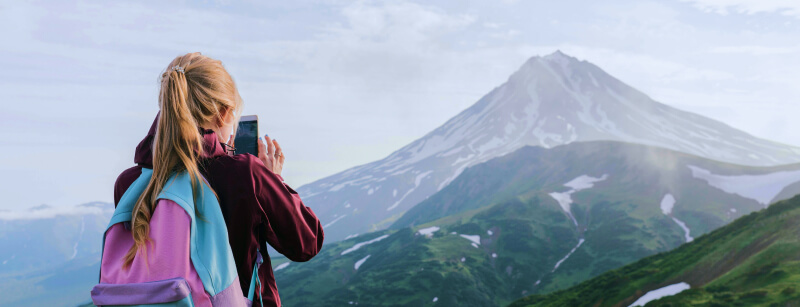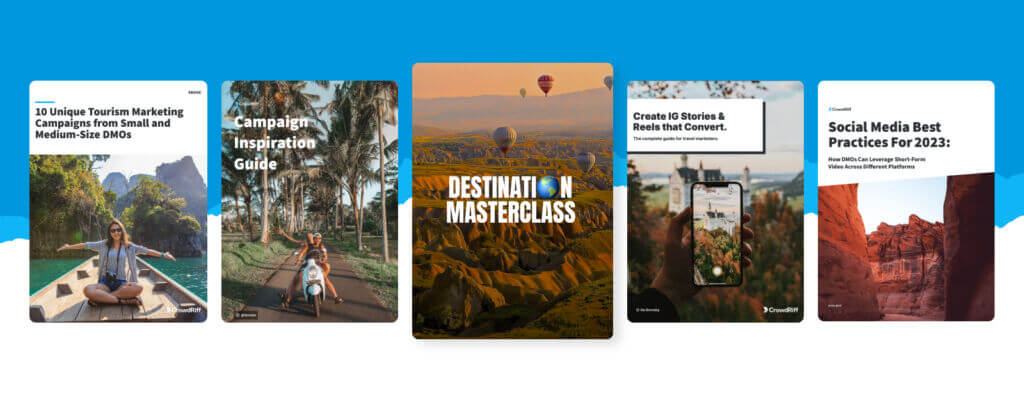As a savvy destination marketer, you’ve likely spent many hours building out your tourism marketing strategy. You’ve compiled data, vetted all the info, and polished your online strategy and you’re seeing results in your web traffic.
But are all those website visitors converting into eager tourists in the way you’d hoped?
Not all destination marketing organizations see the sales results they want right away. But a handful of your fellow DMOs have discovered some brilliant hacks to optimize their tourism marketing strategy online to turn more of those browsers into in-person visitors.
So, without further ado, here are some proven ways to gain the attention of visitors and compel them to buy into your tourism marketing strategy.
Make your visitor guide easier to find on your website
One WACVB Education & Research Foundation survey showed that nearly 70% of people travel to a destination after receiving a visitor guide and 69% of these people stay in hotels.
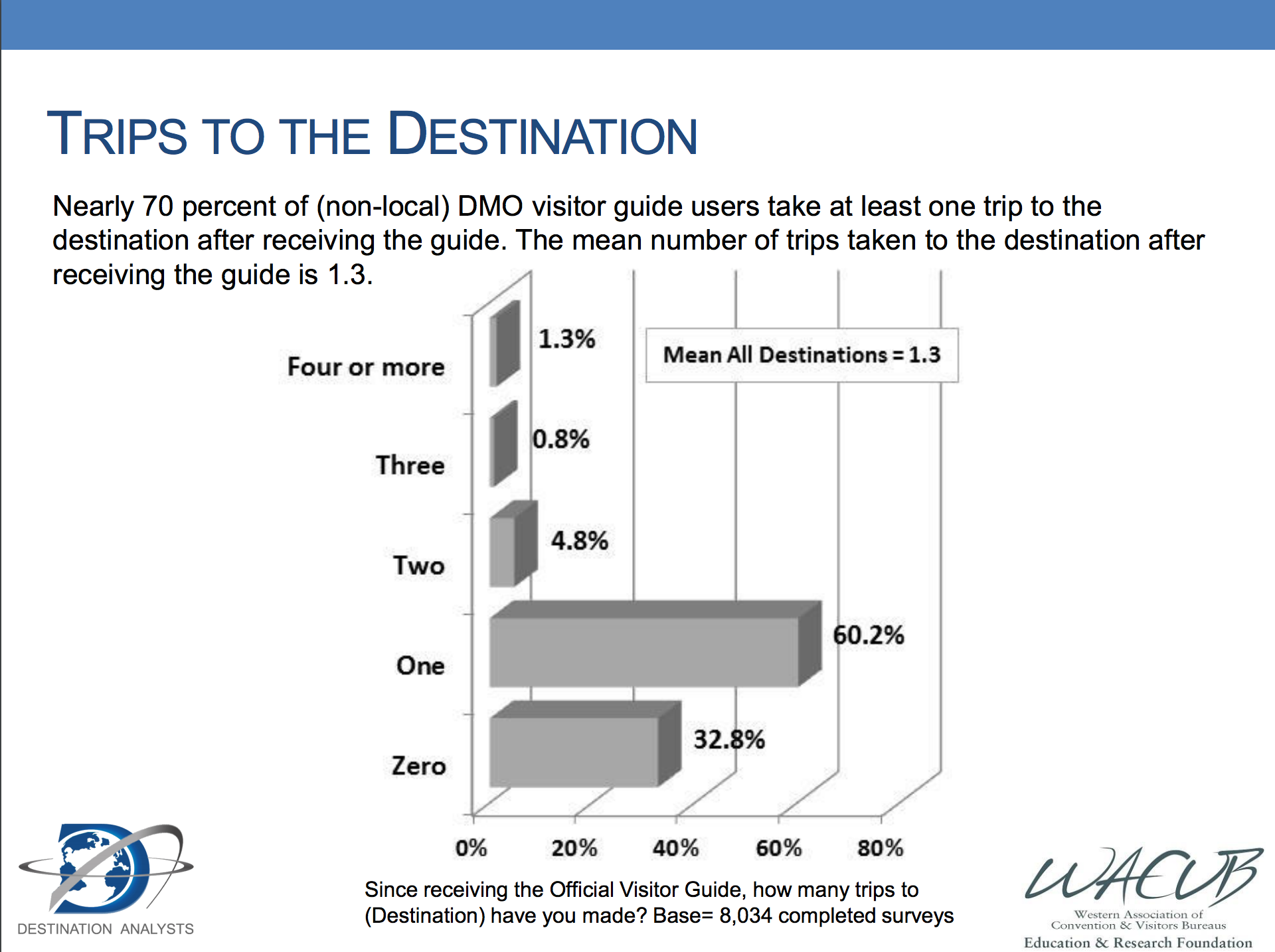 Your visitor guide is a highly effective conversion tool that you have at your disposal, but are you giving it enough visibility?
Your visitor guide is a highly effective conversion tool that you have at your disposal, but are you giving it enough visibility?
Too many DMOs don’t make it easy to find their visitor guide — they’re often tucked away in the website’s footer or in hidden in a drop-down menu.
But if your visitor guide isn’t easy to find, many of your web visitors (and potential travelers!) may miss out on it.
It doesn’t have to be difficult: prominently placing a call-to-action to download your visitor guide above-the-fold on your homepage can make it simple for anyone to find.
For example, Colorado Tourism places their vacation guide front and center on their homepage where it’s impossible to miss:
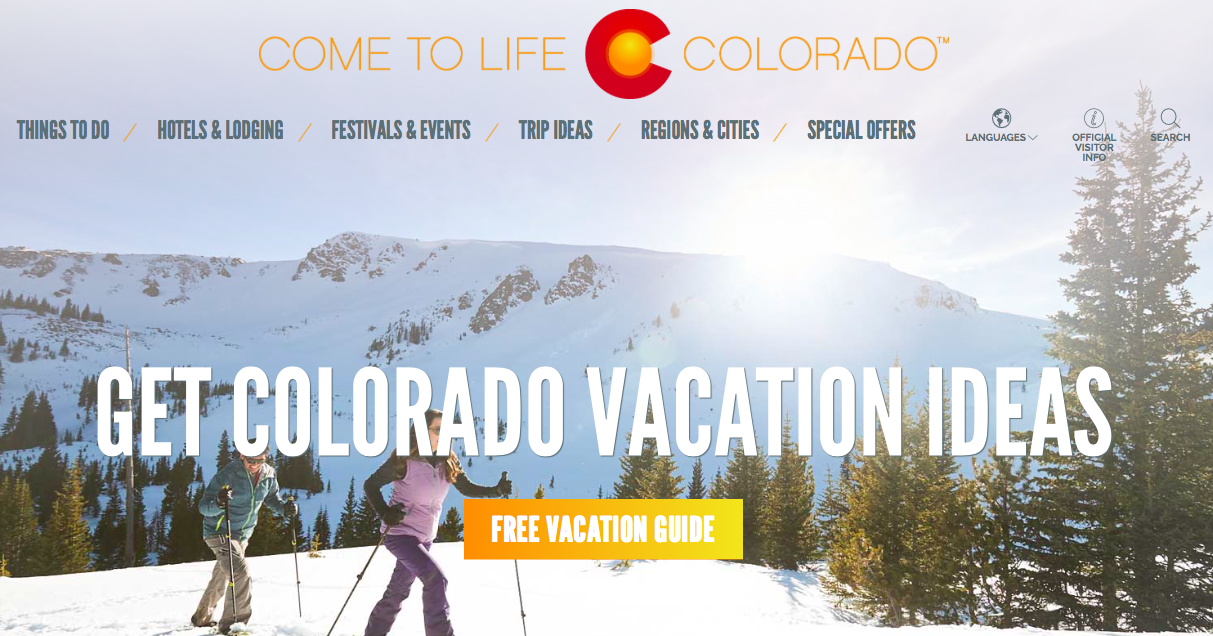 Visit Franklin uses a similar technique, placing its visitor guide CTA right above the main menu, in a bright gold bar:
Visit Franklin uses a similar technique, placing its visitor guide CTA right above the main menu, in a bright gold bar:
Placing a link to your guide above the fold on your site is a surefire way to ensure all those prospective visitors will see it.
Use more visuals to tell your story
While a picture may tell a thousand words, DMOs know that there’s nothing more compelling to visitors than creating a visual experience on your website.
Visit Fairfax conducted an experiment where they A/B tested their Things to Do page. They tested the original version against a version which also included a CrowdRiff gallery of images. The version that included the visual gallery had a 351% higher time on page.
- Using video on landing pages has been found to increase conversions by 86%
- People who shop with mobile say that images are the most important feature
- 88% of consumers have purchased something they’ve pinned
Since 90% of the info sent to the human brain is visual, striking images can help capture visitors’ attention — and keep it. A potential visitor may only retain 10% of info they hear about your destination after three days, but if they see a gorgeous photo of your city with that info, that retention level spikes to 65% after three days.
The key takeaway? If you want to increase conversions on your website, use more imagery.
(To see examples of DMO websites with great visual experiences, read this!)
Harnessing the power of user-generated content
You may know that user-generated content in general tends to gets more engagement and is considered more trustworthy — but guess what? It also increases conversions better.
For example, Discover The Palm Beaches learned the power behind this approach with their recent Friends Trust Friends. Not Ads campaign, which was the first campaign they ran that was driven by UGC visuals.

The resulting advertising campaign generated a 51% increase in display traffic acquisitions, compared to the previous campaign. The Friends Trust Friends campaign has gone on to generate an estimated 23% increase in overnight visits to the destination, compared to a non-UGC driven campaign in 2015. What’s more, digital impressions from the Friends Trust Friends campaign were found to be 66% more effective at driving a visit.
Content created by your biggest fans is a major tool your DMOs should be using to convert more visitors.
“What we really like about CrowdRiff and user-generated content is that it’s other people talking about Pittsburgh. It’s not coming from us as a sales and marketing organization, we’re giving the platform to people who have been here and want to rave about the city.”
Molly Allwein, Digital Marketing Manager, Visit Pittsburgh
Actionable inspiration: pair visuals with powerful calls-to-action
While beautiful visuals are a great first step in capturing visitors’ attention, destination marketers have to take it a step further. Many DMOs know it’s not enough to have gorgeous photos of hiking trails or cityscapes available — that inspiration needs to be actionable.
When visitors hit a tourism website, they may stop to admire the stunning visuals, but leave without taking any action. Adopting this practice of “actionable inspiration” means sharing a next step (like a link) along with your photos so that people can act on their motivation. These are opportunities to engage your visitors and direct them to your tourism partners.
As Kansas Tourism discovered, adding relevant calls-to-action can guide visitors through to next step while your destination is still top of mind:

Kansas Tourism uses CrowdRiff to embed targeted CTAs right in the image. In the above example, the breathtaking ziplining image is paired with a CTA offering more information about Zip KC, a local ziplining company.
Typically, CrowdRiff customers pairing imagery with calls-to-action drive 20% more traffic to their tourism partners’ websites and listing pages.
Stay on top of mind with consistent email marketing
Your destination’s website isn’t the only resource to use to boost conversions. Your tourism organization’s destination newsletter can also serve as a valuable platform for destination marketers to periodically stay on top of mind throughout the travel planning process.
Email marketing is still one of the best ways for destination marketers to get the most bang for their bucks — after all, every $1 you spend on email averages a return on investment of $38. And email provides tourism organizations with the opportunity to deliver exciting news and promos about your destination, target certain travelers with specific messages, or even tell a story about your destination over a series of emails.
Visit Austin Texas offers a shining example of a true “newsletter” — they hook the reader with several simple headings about upcoming seasonal events paired with clear CTAs.
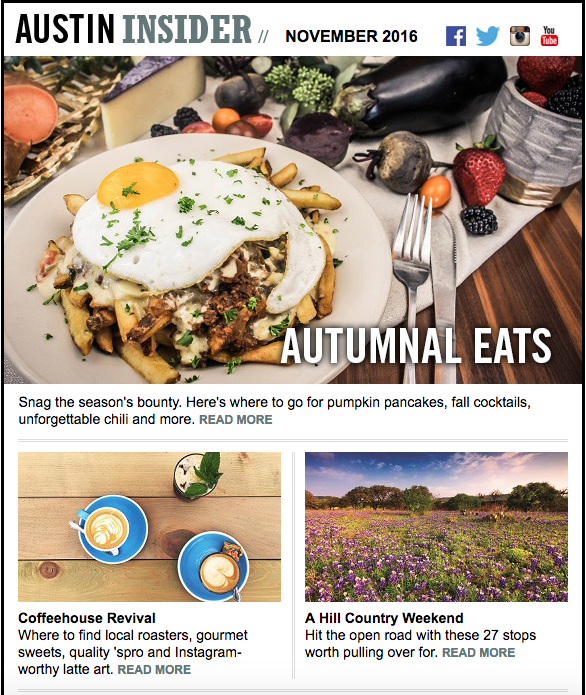
Top tip: subscribe to other DMO newsletters, so that you can get creatively inspired for your own.
Moving forward with your online tourism marketing strategy
As you can see from the previous examples, destination marketers have devised many creative ways to ensure they’re making the most of their tourism marketing strategy. Making some of the minor optimizations, like those we just mentioned, can help your tourism organization get the most mileage from your resources and turn more of your visitors into tourists.
More than 300 DMOs use CrowdRiff to help find the imagery that rounds out their tourism marketing strategy. See how CrowdRiff can help you make your website a better conversion tool today!






